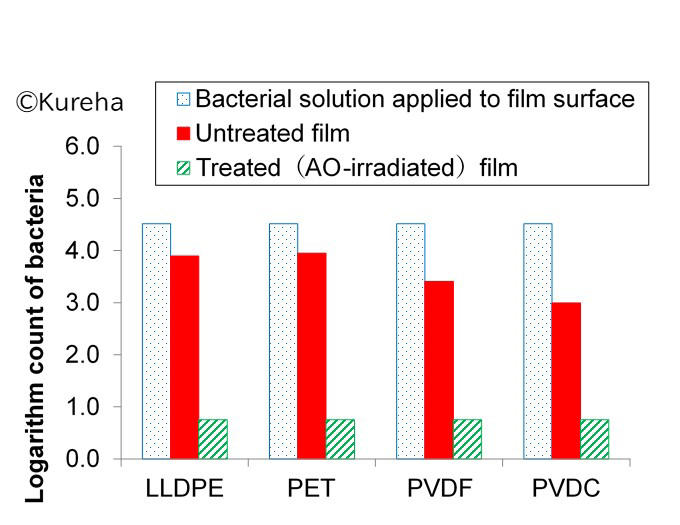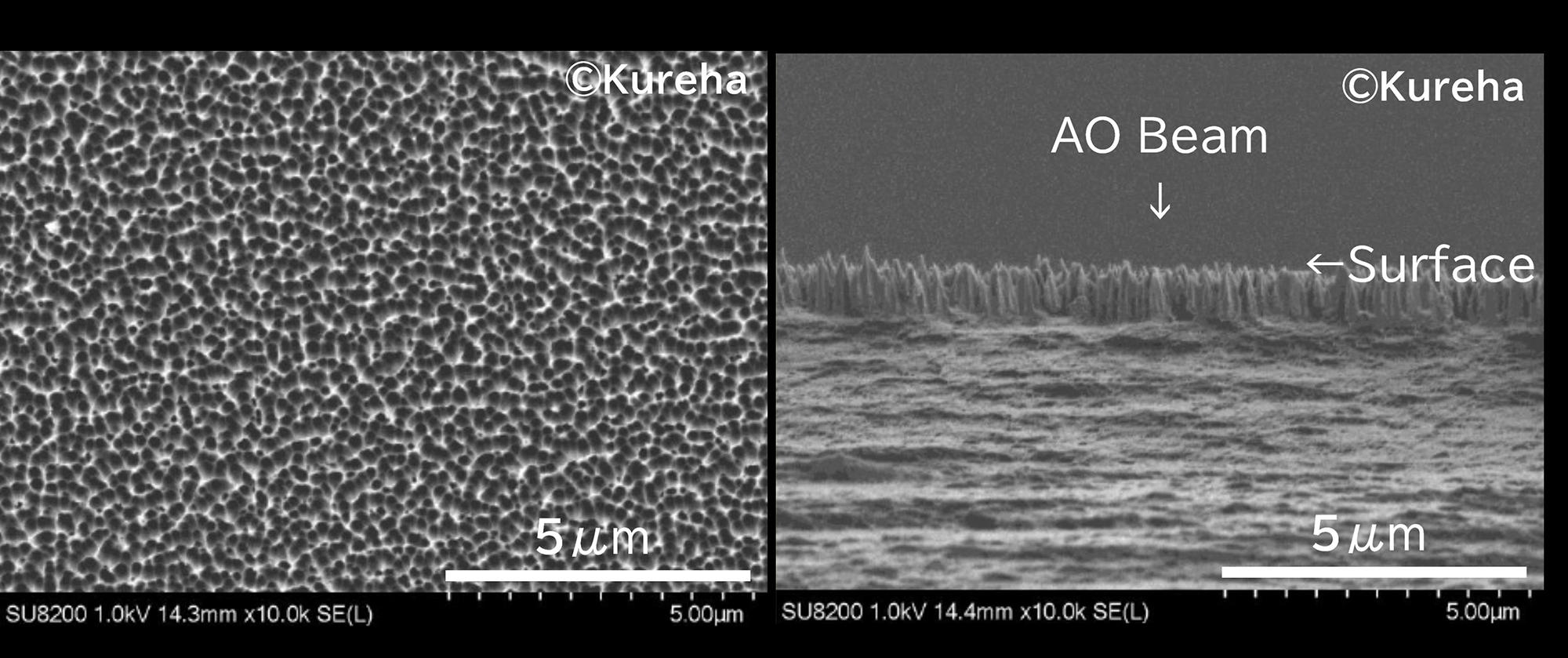Kureha and JAXA Discover Antibacterial Functions of
Atomic Oxygen-Irradiated Polymeric Materials
February 14, 2020 (JST)
Kureha Corporation
Japan Aerospace Exploration Agency (JAXA)
Kureha Corporation (Kureha) and Japan Aerospace Exploration Agency (JAXA) are pleased to announce the findings of our joint research that identified antibacterial effects on polymeric material surfaces irradiated by atomic oxygen.
Atomic oxygen (AO) exists abundantly in low Earth orbit where the ISS or Earth observation satellites fly. The gas is known to cause surface erosion of polymeric materials on spacecraft. In the space industry, it’s been a technological challenge to prevent and control such material degradation in order to ensure the safety of aerospace vehicles.
JAXA has for years investigated how AO affects and interacts with various polymeric materials and ways to improve the tolerance of materials against this gas.
Meanwhile, Kureha has accumulated expertise in polymer development and process technologies for downstream applications. The company offers many unique products, including high-performance film that exhibits excellent barrier properties against vapor and gases.
Leveraging each other’s technological expertise, Kureha and JAXA have since 2017 jointly investigated whether antibacterial effects could be achieved on polymeric material surfaces irradiated by AO.
During the course of this joint research, we discovered that some AO-irradiated surfaces of polymeric materials showed antibacterial functions under the tests conducted in accordance with JIS Z 2801 Antibacterial Products (the test standards for antibacterial activity and efficacy). (Fig. 1) When observing under an electron microscope, you can see micro asperities produced by AO irradiation on the material surface. (Fig. 2)
This AO irradiation method has such significant merits as that a material remains genuine without any foreign substances and it allows a material surface to be microstructurally maneuvered with a simple add-on process. Thus, we expect this method can be used safely for broader antibacterial applications and applied easily for a variety of material surfaces.
Kureha and JAXA will continue to work in this technology field with an aim to broaden its applications on practical materials.

Fig. 1 Results of antibacterial activity test on polymeric surfaces after 12-hour AO irradiation using staphylococcus aureus (JIS Z 2801): Antibacterial activity is recognized when the difference of the number of bacteria observed on AO-irradiated and reference material surfaces is more than 100 times (i.e., difference by more than 2 orders after 24 hours of bacteria inoculation).

Fig. 2 Microstructural images of AO-irradiated surface of PVDF film observed by a Scanning Electron Microscope (SEM).
Note: Kureha is actively developing value-added downstream applications for existing products under its mid-term management plan ‘Kureha’s Challenge 2020’. This initiative, promoted by the company’s ‘New Business Creation Project’ formed in 2016, has targeted the areas such as environment, energy and life science. The collaboration work between Kureha and JAXA began as a part of the project ‘MIRAI KYOSO KAIGI’ organized by JAXA’s Business Development and Industrial Relations Department with aims to explore and identify new business ideas leveraging space technologies.